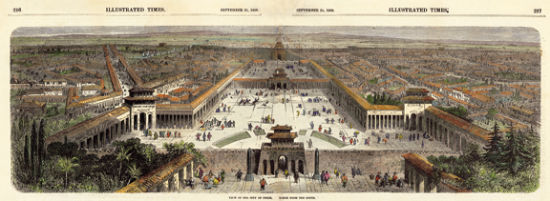
(Ecns.cn) – Urbanization is speeding up throughout China, and with more and more cities jumping on the bandwagon to build faux-ancient streets, excessive uniformity of architecture and distortion of history have become major concerns.
By the end of 2011, China's urban population outnumbered rural residents, with 690.79 million (or 51.27 percent) of the total population living in cities, according to the National Bureau of Statistics.
While many are excited about how rapid urbanization and industrialization are changing their lives, some experts worry that refurbishment projects and reproductions of historical sites will have negative impacts on the protection of history and culture.
A fever for reviving ancient cities
Since the 1990s, Chinese society has had a growing affection for antiquity, and citizens tend to favor ancient towns and cultural heritage sites when making holiday travel plans.
As a result, renovation projects of ancient streets and architecture have sprung up like mushrooms after a rainstorm. Over time, these projects have often become guided by rampant commercial development, and ultimately more focused on profits than preserving ancient cities, according to the Southern Weekly.
Datong city, located in north China's Shanxi Province and renowned for its 2,300 years of history and famous Yungang Grottos, is one of the first 24 ancient cities the government has attempted to revive.
In 2008, the city was approved for a cultural protection and refurbishment project with an investment of 10 billion yuan, a move designed to restore its historic scenery.
A main task of the project aimed to renovate and reproduce the old city walls and some parts of the previous layout. In order to achieve the goal, illegally-built structures covering a total area of 487,942.72 square meters were pulled down in 2009, leading to a major reconfiguration of the current city layout, said the Southern Weekly.
Another example is Tai'erzhuang in east China's Shandong Province. In April 2008, to celebrate 70 years after the success of the Tai'erzhuang Battle, the local government decided to rehabilitate the old town under the spirit of "protection, restoration and creation."
Replicas with creative designs
Without a doubt, the value of historical sites and cultural relics is beyond calculation, but shoddy replicas undermine that potential value.
Over the past decade, the trend of restoration and imitation has created a dangerous belief that replicas of old towns and ancient streets are completely accurate, which easily misdirects the public.
When refurbishing ancient streets and architecture, many decision-makers only eye the potential profits from tourism, and are unconcerned with historic preservation.
For example, when reproducing an ancient street, designers will in most cases be told to map out an area for booths selling handicrafts and snacks, an effective channel to collect booth management fees.
Meanwhile, to make the faux-historic scenes more inviting to modern aesthetic tastes, decision-makers may order developers to be creative, which implies that they can change the original layouts and décor as they see fit.
A protective sabotage
Restoring ancient streets and architecture without reference to sound historical documents is a kind of sabotage conducted under the disguise of protection.
According to the law on the protection of historical relics, if a site is completely demolished, rebuilding is forbidden on the same site, and governments at different levels should take measures to protect original sites from further damage.
Many current restoration projects are deliberately blurring the concept of genuine historical relics and replicas, a behavior that misleads the public.
With the majority of faux-historic streets and architecture finished in a very limited time, and restoration projects designed creatively, constructors are, to some extent, distorting history, and the construction quality and details cannot be guaranteed.

Copyright ©1999-2011 Chinanews.com. All rights reserved.
Reproduction in whole or in part without permission is prohibited.